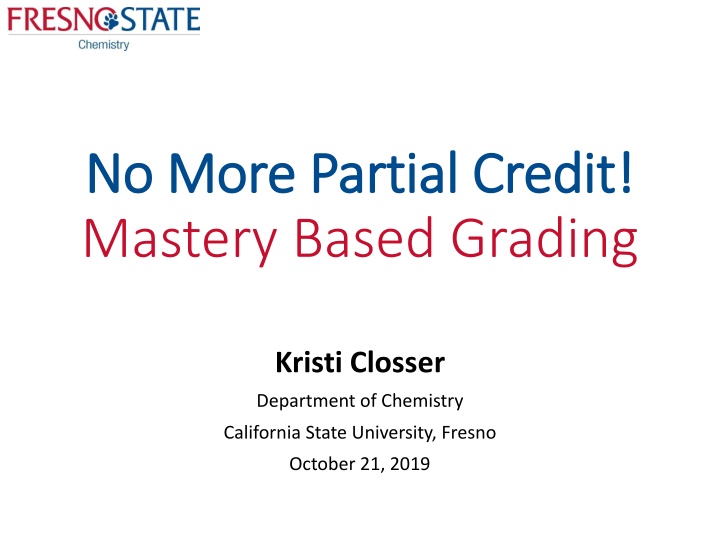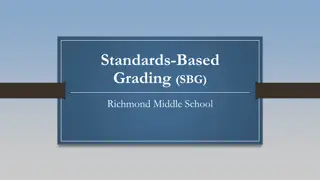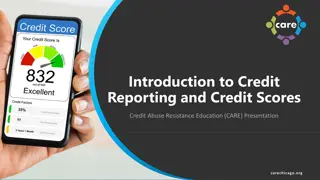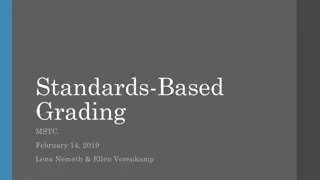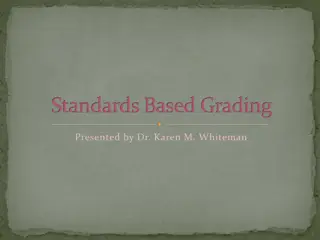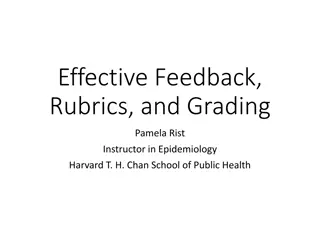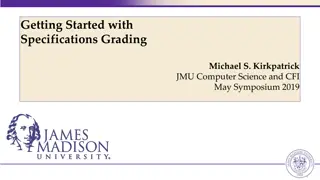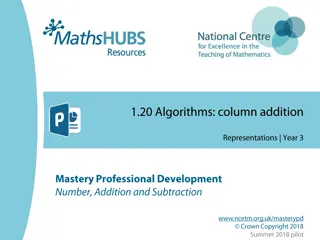No More Partial Credit: Mastery-Based Grading in Chemistry
Mastery-based grading eliminates partial credit, focusing on meaningful assessments like quizzes, participation, lab assignments, and finals. This approach allows most students to master the material with support and multiple attempts. The example of a physical chemistry course highlights the elements of this grading system and its benefits for student learning.
Download Presentation

Please find below an Image/Link to download the presentation.
The content on the website is provided AS IS for your information and personal use only. It may not be sold, licensed, or shared on other websites without obtaining consent from the author.If you encounter any issues during the download, it is possible that the publisher has removed the file from their server.
You are allowed to download the files provided on this website for personal or commercial use, subject to the condition that they are used lawfully. All files are the property of their respective owners.
The content on the website is provided AS IS for your information and personal use only. It may not be sold, licensed, or shared on other websites without obtaining consent from the author.
E N D
Presentation Transcript
No More Partial Credit! No More Partial Credit! Mastery Based Grading Kristi Closser Department of Chemistry California State University, Fresno October 21, 2019
Quick Comparison of Grading Systems Quick Comparison of Grading Systems Traditional Mastery Point-based Score focused One attempt Grades often relative Only a few students ever become experts and have natural ability Completion based Knowledge focused Multiple attempts Meaningful grades Most students can master material given enough time and support
Example: Physical Chemistry Course Upper division required course (B.A. Chemistry) 20-30 students 2 hour lecture class 2 days a week
Graded Elements 1. Quizzes ( multiple choice, short answer) 2. Participation 3. Lab Assignments 4. Final
Graded Elements 1. Quizzes ( multiple choice, short answer) 2. Participation 3. Lab Assignments 4. Final
Graded Elements 1. Quizzes ( multiple choice, short answer) Must pass all multiple choice sections to pass course Pass: typically 5/7 or 6/8 Short answer sections Pass: typically 4/6 or 5/7 Number of passed SA sections affects final grade All quizzes can be retaken until end of semester Cost 1 p-chem pound (earned by completing practice problems 2nd retake (and beyond), must be done orally
Graded Elements 2. Participation Earned principally by completing pre-class problems (Canvas) Other opportunities: surveys, attending seminars, etc.
Graded Elements 3. Lab Assignments Computer lab Examples on SERC website! Investigating Real and Ideal gases Kinetics of Herbicide Photodegradation Credit primarily based on completion and understanding Students allowed one free resubmission Further resubmissions cost p-chem pounds
Graded Elements 4. Final Selection of problems from module quizzes No retakes/resubmissions Ensures some level of longer-term retention
Warnings Easy to make VERY time consuming for faculty Be careful in design especially for larger classes Largest class to date: 45 students Not brave enough to try for Chem 1A: 140 students Students not used to system
Acknowledgements Fresno State Chemistry Department Hubert Muchalski Eric Person Joy Goto Resources Talbert Mastery Grading (Blog) http://rtalbert.org/tag/mastery-grading/ Buckmiller, Peters, Kruse (2017) Questioning Points and Percentages: Standards-Based Grading (SBG) in Higher Education , College Teaching, 65:4, 151-157 https://doi.org/10.1080/87567555.2017.13029 Brookhart: How to use Grading to Improve Learning (2017) http://www.ascd.org/ASCD/pdf/siteASCD/publications/books/HowToUse GradingToImproveLearning.pdf
